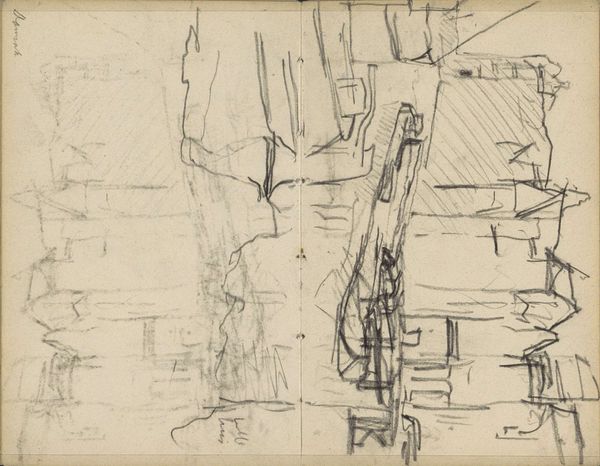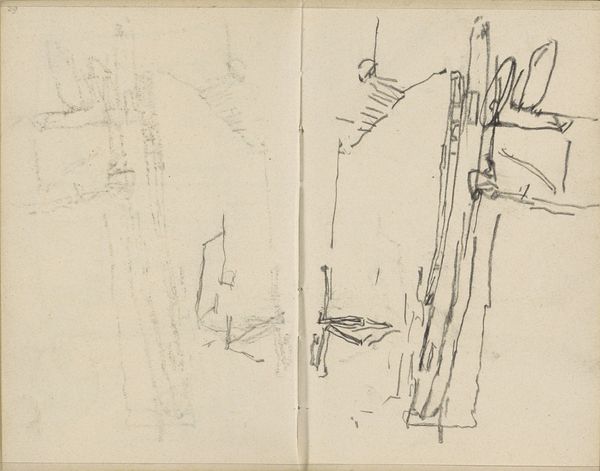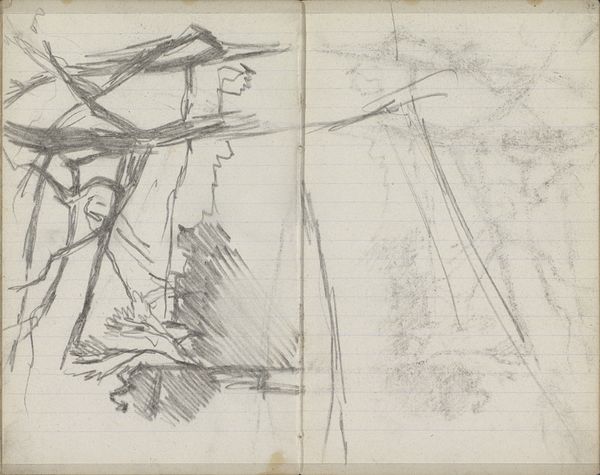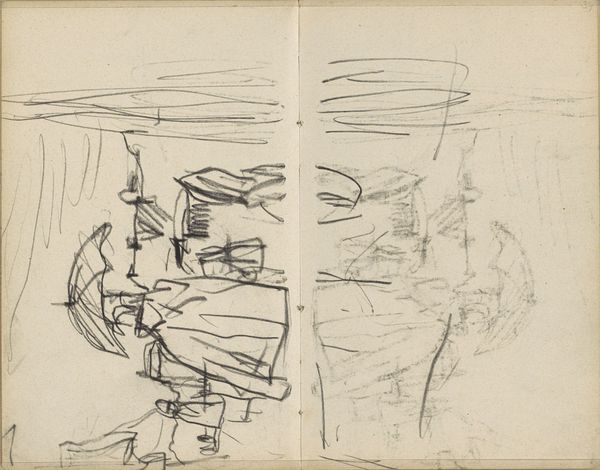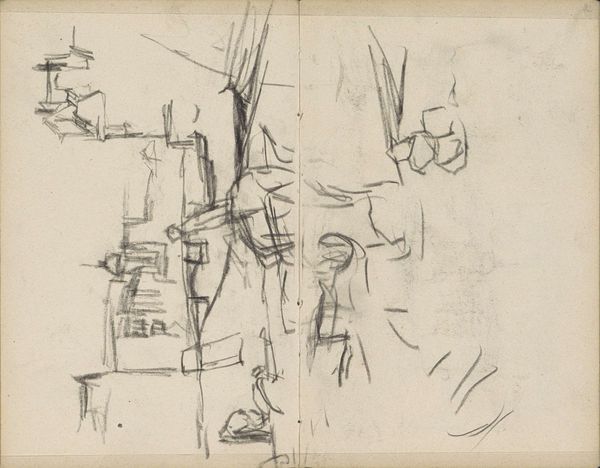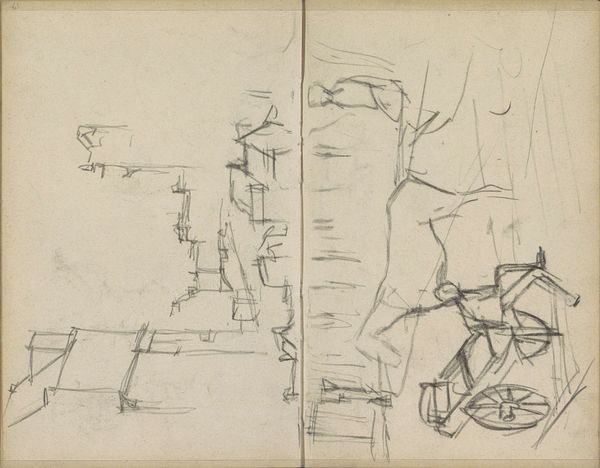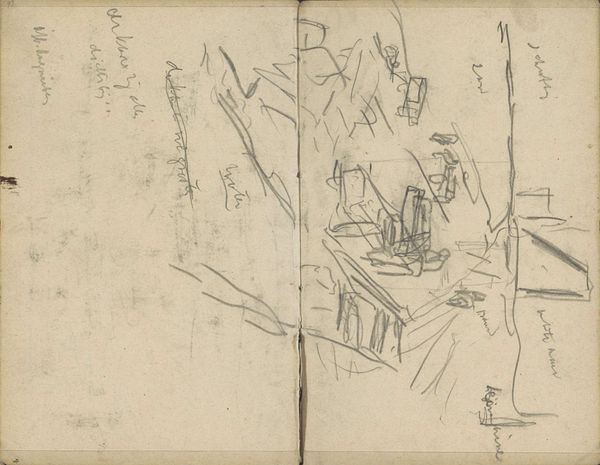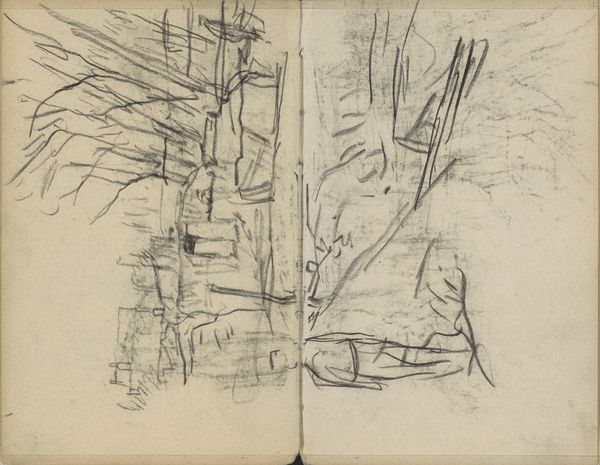
Gezicht in Amsterdam met een kraan, waarschijnlijk de Prinseneilandsgracht 1907 - 1909
0:00
0:00
georgehendrikbreitner
Rijksmuseum
Copyright: Rijks Museum: Open Domain
Editor: So, this is George Hendrik Breitner's "Gezicht in Amsterdam met een kraan, waarschijnlijk de Prinseneilandsgracht," made sometime between 1907 and 1909. It looks like a pencil and ink sketch from a notebook, very rough and immediate. What stands out to you? Curator: The roughness, that's key. It isn't just a study of a cityscape. Think about Amsterdam at the turn of the century – industrialization booming, but unevenly distributed. Breitner, known for documenting the lives of working-class women, here offers glimpses of labor through infrastructure. Notice the crane – a symbol of progress, yet starkly drawn. What power dynamics do you see reflected in that contrast? Editor: Power dynamics? I hadn’t considered that. I was focused on the loose style. But you’re right, the crane does dominate the scene. It’s almost oppressive compared to the barely-there buildings. Curator: Precisely. Consider, too, who benefited from this "progress". Breitner wasn't simply sketching pretty scenes; he was engaging with the realities of a city undergoing profound social and economic shifts. How does the lack of human figures change the way we perceive the impact of the construction? Editor: It almost feels like the city is being built *on* absence, as though something is being erased, or overlooked in its making. Curator: Exactly. And the fact that this is a quick sketch underscores the immediacy and urgency of those shifts. Breitner is capturing a fleeting moment, but it's one pregnant with implications about urban development and its discontents. Does seeing it this way make you reconsider your initial impression? Editor: Definitely. It goes from just a rough sketch to a critical observation. Curator: And that’s where art history intersects with social consciousness – in looking beyond the surface, and interrogating whose stories are told, and how. I think I see a lot more than a mere landscape here. Editor: Me too. It makes me think about the layers of history embedded in the present-day city.
Comments
No comments
Be the first to comment and join the conversation on the ultimate creative platform.

